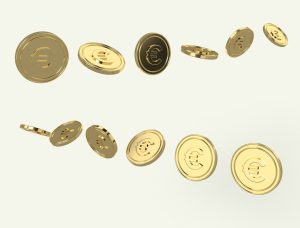Forex trading is a complex and challenging process that requires a lot of understanding and analysis. Technical analysis is an essential component of forex trading, and it involves analyzing charts and patterns to predict future price movements. Technical analysis is vital because it helps traders to make informed decisions based on past price movements, and it is a valuable tool for both short and long-term traders. In this article, we will explore all the technical analysis in forex and how they can be used to make profitable trades.
1. Candlestick charts
Candlestick charts are the most commonly used charts in forex trading. They provide a visual representation of price movements and allow traders to identify trends and patterns easily. Candlestick charts are made up of bars that indicate the opening, closing, high, and low prices of a currency pair for a specific time frame. The color of the bar represents whether the price has gone up or down. A green bar indicates that the price has gone up, while a red bar indicates that the price has gone down.
2. Moving averages
Moving averages are another important technical analysis tool used in forex trading. They help traders to identify trends and potential reversal points. A moving average is the average price of a currency pair over a specified period. Traders use moving averages by comparing the current price of a currency pair with its moving average. If the current price is above the moving average, it indicates an uptrend, while if it is below the moving average, it indicates a downtrend.
3. Bollinger bands
Bollinger bands are a technical analysis tool that helps traders to identify potential trends and breakouts. They consist of three lines that represent the moving average, the upper band, and the lower band. The upper and lower bands are calculated by adding and subtracting a standard deviation from the moving average. When the price of a currency pair moves outside the upper or lower band, it indicates that the market is overbought or oversold, respectively.
4. Relative strength index (RSI)
The relative strength index (RSI) is a technical analysis tool that helps traders to measure the strength of a trend. It is a momentum oscillator that ranges from 0 to 100. When the RSI is above 70, it indicates that the market is overbought, and when it is below 30, it indicates that the market is oversold. Traders use the RSI to identify potential trend reversals and to confirm the strength of a trend.
5. Fibonacci retracements
Fibonacci retracements are a technical analysis tool that helps traders to identify potential support and resistance levels. They are based on the Fibonacci sequence, which is a series of numbers that follows a specific pattern. Traders use Fibonacci retracements by drawing a line from the high to the low of a currency pair and then identifying the potential retracement levels based on the Fibonacci sequence.
6. Elliott wave theory
Elliott wave theory is a technical analysis tool that helps traders to identify potential trends and reversals. It is based on the idea that the market moves in waves, and these waves can be identified and analyzed. Traders use Elliott wave theory by identifying the different waves and their corresponding characteristics, such as price and time.
7. Ichimoku cloud
The Ichimoku cloud is a technical analysis tool that helps traders to identify potential support and resistance levels, as well as trend direction. It consists of five lines that represent the moving average, the upper and lower bands, the conversion line, and the base line. When the price of a currency pair is above the cloud, it indicates an uptrend, while when it is below the cloud, it indicates a downtrend.
In conclusion, technical analysis is an essential component of forex trading, and it involves analyzing charts and patterns to predict future price movements. Traders use different technical analysis tools to identify trends, potential reversals, and support and resistance levels. The tools mentioned above are just a few of the many technical analysis tools used in forex trading. As a forex trader, it is essential to understand these tools and how to use them correctly to make profitable trades.






